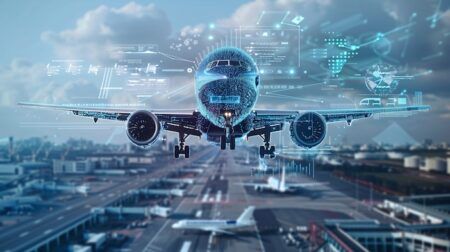I’ve often questioned the term ‘passenger experience’. It is a modern phrase that has emerged over time alongside the developments in air and rail travel. Looking back 10-20 years, many frequent flyers would have expected nothing more from a flight than to be comfortably transported to their chosen destination safely and on time. Repeat the conversation with a 21st century frequent flyer and the answer would be very different fundamentally the same, of course, but with so many more elements involved.
But what has changed? The answer is, quite simply, we have. Customer expectations have transformed significantly, and as a result, operators are now looking to provide a more holistic, end-to-end service. It isn’t unusual nowadays for airlines to offer limousines to and from the airport. The luxury afforded to today’s flyer continues inside the airport terminals, with enhanced lounges and onboard connectivity. It can all be traced back to passenger comfort one of the fastest growing areas in contemporary travel.
As anyone who has crossed multiple time zones will know, jet lag and general travel fatigue are the less glamorous side effects of long-haul travel. No matter how many hours sleep you get onboard, these physical conditions are tricky to prevent and even trickier to overcome. Hours spent cramped into small seats at 38,000ft naturally take their toll on the body, leaving passengers feeling exhausted, and often physically unwell. Factors that can heighten the negative side effects are exacerbated by a lack of sleep, caffeine intake and dehydration while onboard.
The latter in particular is a major problem when traveling by plane and has yet to be tackled effectively. Relative humidity in the cabin is low at around 10-15% compared with that of cities like London or New York, which stand at around 60-80%, or even the Sahara Desert at 25%. Additionally, access to water is limited, making it hard to stay adequately hydrated. Studies have shown that a decrease in hydration levels by just 1-2% can have significant effects on the body, particularly cognitive functions. It can also lead to tiredness, fatigue and irritability, which many recognize as being associated with jet lag.
In the context of air travel, dehydration can also cause a number of additional problems. As we become dehydrated, it has been shown that blood viscosity can increase, producing a greater chance of developing deep vein thrombosis (DVT) amongst those most at risk.
The mucosal membranes of the body (the lining of the nose, mouth and lungs) also dry out when on a plane. These surfaces trap bacteria and viruses as they try to enter the body, thus helping to prevent sickness. As we become dehydrated mucosal membranes function less efficiently, which can increase the risk of illness. Although cabin air is cycled through HEPA filters (similar to surgical wards or biohazard labs), these filters only function when the air is circulating. Despite this, extended periods of time in close proximity to sick people can increase the risk of infection by 20-100 times. All this has a huge effect on the passenger experience and can often leave travelers feeling negative about their flight.
Fortunately, there are solutions, such as rehydration formulas with vitamins and minerals, which can help the body absorb water more efficiently, enabling passengers to make the most of the in-flight water provided by airlines.
Daniel Cray is marketing director at Phizz. Phizz has developed a rehydration formula with vitamins and minerals in an orange-flavored effervescent tablet. To help support the body’s immune system, Phizz contains a vitamin and mineral complex that possesses antioxidant properties. This ensures the immune system is functioning at capacity, helping passengers to stay healthy both during and after their flight, and contributing to a positive passenger experience.




